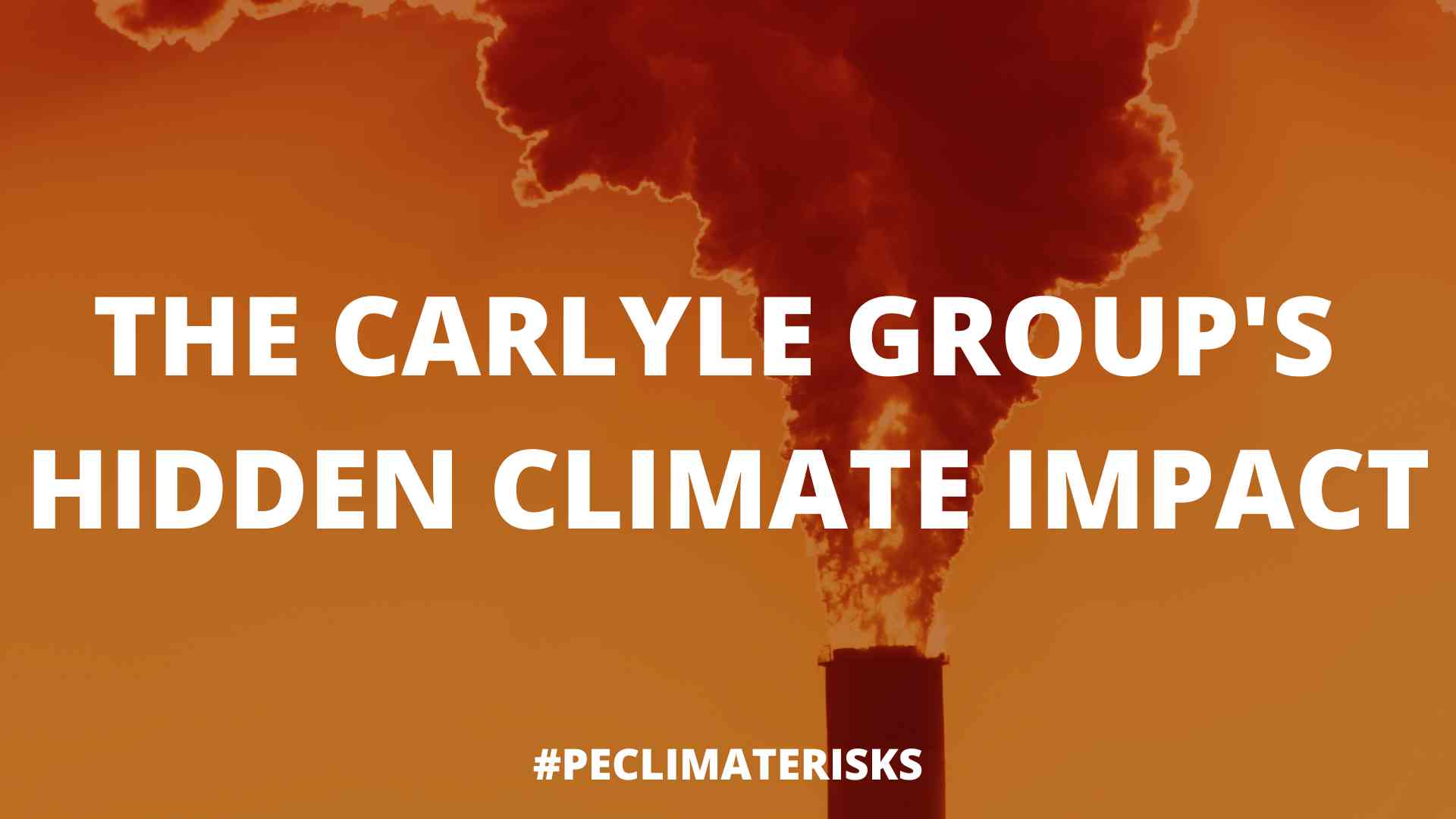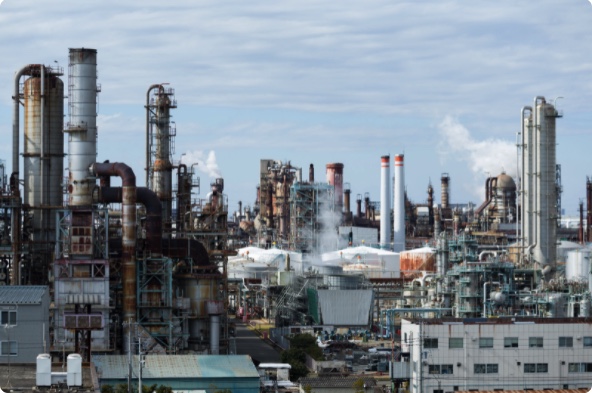
Investigation exposes Carlyle Group’s hidden climate impact
April 27, 2023
Private equity firm’s previously undisclosed energy impacts pose risks for investors and exacerbates the climate crisis.
Carlyle remains one of the largest owners of gas-fired power capacity in the U.S.
A new investigation released today reveals that the Carlyle Group (Carlyle), a private equity titan with $373 billion in assets under management, has been quietly scooping up fossil fuel assets over the past decade, in contravention of its stated climate goals. Its billions of dollars of investment in fossil fuel assets produced an estimated 277 million metric tons of CO2 emissions over just ten years, as much as the “carbon bomb” that Alaska’s Willow arctic drilling project is set to emit in its entire lifetime.
This report, The Carlyle Group’s Hidden Climate Impact, is part of the Private Equity Climate Risks project, a collaborative effort investigating private equity’s impact on the climate crisis by Americans for Financial Reform Education Fund (AFREF), Global Energy Monitor (GEM), and the Private Equity Stakeholder Project (PESP). This first-of-its-kind analysis examines Carlyle’s energy portfolio from 2011–2021, providing previously unavailable data to investors and the public. Read more at: https://www.peclimaterisks.org
“Over the last decade, Carlyle deployed billions of dollars to fund polluting companies in every sector across the fossil fuel energy supply chain,” said Oscar Valdés Viera, research manager at Americans for Financial Reform Education Fund. “Our findings show that despite its public statements to the contrary, Carlyle is a driving force behind climate change through its substantial financing of greenhouse gas-emitting sectors. Without meaningful regulatory oversight, private equity firms like Carlye will continue to get away with endangering low-income and Black and Brown communities, who are at greater risk from pollution and environmental harm.”
Carlyle’s estimated $22.4 billion fossil fuel portfolio also exposes its own investors to a range of climate-related risks, and its lack of comprehensive disclosures prevents the public, regulators, and investors from being able to adequately assess and mitigate those risks.
“The capital Carlyle has used to bloat their massive fossil fuel portfolio has come off the backs of public employee pension funds, university endowments, and other institutional investors,” said Amanda Mendoza, climate researcher at Private Equity Stakeholder Project. “This report serves as a resource for pension funds and investors who are already working to decarbonize and de-risk their investments. Even investors actively seeking to address these risks in their public market portfolios may already have exposure to dirty assets.”
Carlyle stands out among large diversified private equity firms as having one of the largest energy portfolios, mostly devoted to fossil fuels. Its portfolio has approximately $22.4 billion in carbon-based energy companies and only an estimated $1.4 billion committed to renewable and sustainable energy companies—less than 1 percent of total assets under management. From 2011 to 2021, Carlyle invested in 91 energy companies that owned 972 energy-related assets, with 90% of these investments being in fossil fuels. Consequently, the private equity firm’s electricity generation is significantly dirtier than US national production. Carlyle produced an estimated ten times more electricity from fossil-fuel-burning plants (146 megawatt-hours) than from renewable sources (15 megawatt-hours). During this same period, the US as a whole produced only four times more electricity from fossil fuels than from renewable sources.
Carlyle is also currently a major owner of utility-scale electric power plants in the United States, and its natural gas fleet makes Carlyle one of the largest owners of gas-fired power capacity in the US, rivaling giants like Berkshire Hathaway Energy, NRG Energy, and the Tennessee Valley Authority.
“It was eye-opening to uncover the sheer amount of gas-fired power plant capacity that Carlyle owns through their portfolio companies. It ranks as one of the largest owners of gas plants in the United States, yet the average rate payer likely has no idea who Carlyle is or how to hold it accountable,” said Alex Hurley, research analyst at Global Energy Monitor. “It was also shocking to review the number of pollution-related violations recorded by the EPA for the Carlyle power plant fleet, many of which are located steps away from low-income communities and communities of color who bear that impact.”
The majority of Carlyle’s US power plant assets are located in areas with higher populations of low-income residents and/or people of color than the statewide average. In some facilities in Connecticut, Massachusetts, and Texas, the percentage of low-income residents and/or residents of color near the plant was over 25 percentage points higher than the state averages for these same statistics.
“Coupled with recent investment fundraising woes and concerns around the firm’s executive leadership, Carlyle has many incentives to minimize additional climate risks for its investors,” said Alyssa Giachino, Climate Director at Private Equity Stakeholder Project. “Carlyle’s recent struggles suggest they need better long-term and sustainable strategies to manage risk. Continued investment in fossil fuels is clearly not the answer. However, with a new CEO and ongoing fundraising, Carlyle is at an important inflection point and could reposition its strategy to become a true leader on climate.”
“Carlyle’s deep investments in oil and gas exacerbate the climate crisis and fuel environmental destruction, but investors in Carlyle are in the dark about the social and environmental impacts of these investments,” said Anne Perrault, finance policy council with Public Citizen’s Climate Program, who was not involved with the report. “The SEC should advance climate disclosure rules that provide this information for both public and private markets.”
Regrettably, Carlyle is far from the only private equity firm with ongoing investments in oil and gas. Since 2010, at least $1.1 trillion has been channeled into oil and gas exploration, extraction, pipelines, and power plants worldwide. Private equity firms often adopt strategies like saddling portfolio companies with debt and implementing aggressive cost-cutting measures, which force these companies to take excessive risks in pursuit of rapid profit growth. These companies then struggle to operate when resources that should have been allocated to capital improvements, maintenance, environmental safeguards, asset retirement and remediation, or decarbonization are instead redirected to Wall Street investors.
